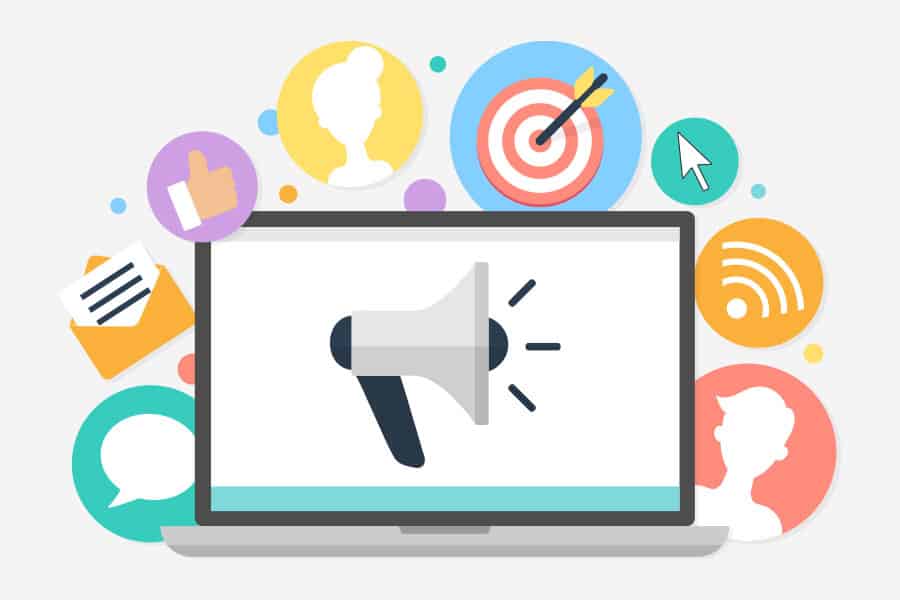If you’re reading this during the springtime Coronavirus pandemic of 2020, you are likely working from home or in a near-vacant office practicing social distancing. Once busy streets are now deserted, and you find yourself analyzing both new COVID-19 case data and the stock market, as well as obsessing over the financial section of your local newspaper. We get it. We’re doing the same thing. We also know this is temporary, and we need to shift that focus back where it belongs.
During times of crisis, it’s human nature to seek that which is familiar. Which is why, now more than ever, is the time to increase your level of communication with your customer base. Your customers are looking to you for guidance and help to get through these difficult times. Be real, clear and straightforward with your customers, and they’ll reward that with loyalty for the long haul.
We’re here to offer a few tips on how you can stay connected, provide clarity in uncertain times and guide your customers when they need you most.
1. Use email to communicate company updates and helpful information.
Email remains one of the best options for communicating with your customers and staff. Your emails should include status updates on business hours and any changes in your business that may impact customers. Also include how you can best address their needs. You can do this with one-time emails, but you can also create weekly or monthly newsletters that are packed with helpful information your customers are looking for. Examples include:
- Ongoing safety and health policies to keep your team and customers safe
- Alternative purchasing or servicing options
- How are you taking care of your employees during shutdown?
- How will these changes impact your customers?
- Share positive or heartwarming stories from your company and employees
- Interesting, relevant or useful industry updates
- Information on government support programs that might help your customers
- How customers can reach you with concerns
2. Don’t leave your blog untouched.
Whether your business is deemed essential or has shuttered for the time being, your website’s blog is still 100% operational. Use it to communicate your current status, share alternative ways you are doing business (delivery/curbside, etc,) and continue to provide helpful product or application-specific information to your customer base. Not only is it a benefit to your customers, but your blog is one of the most efficient ways to build name recognition and trust (Inc.).
Blog content that does particularly well focuses on answering your customers’ most common questions. These could be how-to articles, interviews, industry updates, product reviews or simple infographics that present information quickly and clearly.
Check out the 3 Aspens Media blog for inspiration.
3. Leverage your social media accounts.
While Americans practice social distancing, many are filling their time and curbing their boredom on social media. Many companies are expanding their social reach to connect with their customers with helpful posts. The right messaging can not only provide valuable information to your customers, but also give your company an opportunity to engage directly. Some companies have shared infographics that explain:
- OSHA guidelines
- What is coronavirus and how it spreads
- CDC guidelines for handwashing
- Tips on social distancing in the workplace
- COVID-19 regional spread
- How they’re helping their team and customers
The most common and successful social platforms for businesses include Twitter, Instagram, Facebook and LinkedIn, but there are countless others that may be a better fit. The best way to know what works for your brand is to talk to your customers. Find out where they spend their time and then develop content that aligns with that social network.
Pro Tip: Content does not always translate across all platforms. Make sure to create content that follows the guidelines associated with each social network. For example: Twitter prefers short snippets of text, but LinkedIn is a great place for B2B companies to share longer, thought-leader articles. Facebook is great to add a human touch with more pictures of your team and casual language.
4. Focus on problem-solving content.
During times of crisis or stress, listen to your customers and learn what they’re most concerned about. More than likely, that has changed from just a month ago. Create a plan to provide guidance on these issues, whether through emails, blog articles or a monthly/weekly newsletter. Focus on content that helps solve a problem for them or puts them at ease. You may need to throw out your existing content calendar and substitute with more relevant content. Examples from some of the work we’ve done lately for clients include:
- A “how-to” piece on how to use video conferencing tools
- How to conduct a stress test on their financials
- How to extend the life of your tools
- An easy-to-read infographic on remote work tips
- How to prepare the workplace for COVID-19, per OSHA
Related: 11 Tips for Newly Remote Workers During the Coronavirus Pandemic
We’d love to hear how you’re communicating with your customers. Reach out if you’d like feedback. 3 Aspens Media is here to help. Reach out to us at info@3aspensmedia.com.
Check out our infographic: 5 Types of Critical Content to Share During the COVID-19 Pandemic



